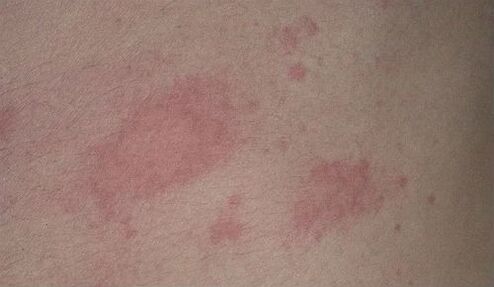
If you suspect that you have this disease, but do not know what psoriasis looks like and how to treat it, you should learn more about this disease and urgently visit a dermatologist.
What does psoriasis look like in the initial stage: symptoms, photos?
For psoriasis at any stage, skin rashes are characteristic. Even at the very beginning of development, the disease manifests itself in different ways. In some cases, it begins actively, develops rapidly, in others small and slow manifestations. In any case, in the absence of medical care, the disease progresses and captures larger and larger areas of the skin.
The initial stage of the disease in the form of small rashes (papules) can make diagnosis difficult. Over time, the rash grows and coalesces into plates covered with horny scales. It is very important to diagnose psoriasis in the early stages so that treatment can begin immediately. The result of treatment will be a prolonged remission, in some cases 3 to 4 years.
Psoriasis is characterized by the following places on our skin:
- lumbar region
- knees and elbows
- inguinal folds
- head
- pimples
The disease has several forms, each of them has distinctive features. Depending on where and how exactly the papules appear will depend on what type of psoriasis the dermatologist diagnoses.

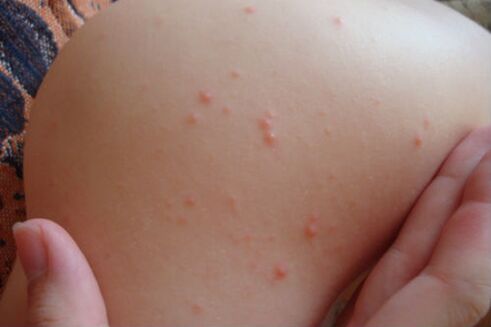
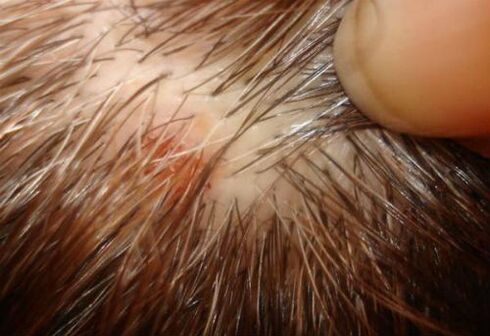
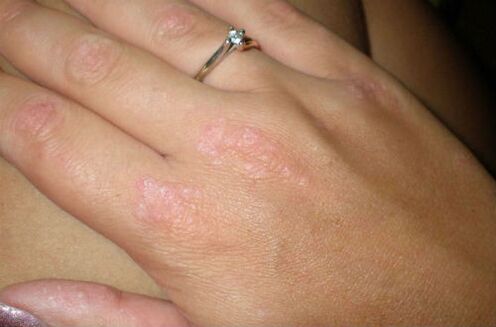
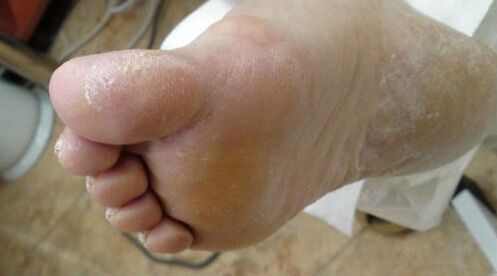
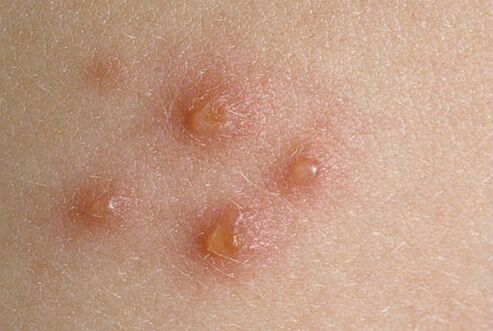
In any case, the skin rash is not healthy, but with the following symptoms, it is most likely associated with psoriasis:
- The spots are red, have a slight bump, and are covered with scales (dead cells) that slough off.
- Plaques appear anywhere, most often in the area of the knees and elbows. Sometimes they bite.
- Nails exfoliate, deform.
- On the feet, palms, painful blisters that can itch.
What are the forms of psoriasis?
The most common form is plaque psoriasis. It is also commonly called ordinary or vulgar. In all cases, up to 90% of diseases are accounted for in this way.
Psoriasis vulgaris is characterized by raised red plaques with gray or white scales. Infected skin becomes inflamed, easily injured, and bleeds when the scales fall off. Over time, the plaques on the skin grow and coalesce into large areas, because. called "paraffin lakes".
Known as the opposite, flexural surface psoriasis are smooth, slightly raised red patches that barely flake. Location of spots mainly in skin folds: groin and armpits, external genitalia, folds under the abdomen and mammary glands (with obesity).
The spread to other areas of the skin is minimal, but treatment in this form is complicated due to natural friction during movement, sweating. Inverse psoriasis, if left untreated, may be accompanied by streptococcal pyoderma or fungal diseases.
Guttate psoriasis is not so common, it is a complication after streptococcal infections. It is characterized by small drop-shaped lesions. Another distinctive feature of guttate psoriasis is the color of the psoriatic plaques, which range from red to purple. The affected area is extensive, most often it is the hips, it can occur in other areas of the skin.
One of the most severe forms is attributed to pustular psoriasis. Its symptoms are blisters (pustules) with clear fluid. The skin under and around them is hot and swollen. When blisters become infected, the clear fluid fills with pus, which is easily sloughed off but difficult to treat. Place of localization: lower legs and forearms.
Psoriatic onychodystrophy develops in the fingernails and toenails. This form leads to changes in the nails. They can change color, dots or transverse lines appear. The most severe forms are characterized by delamination or complete loss of the nail.
Psoriatic arthritis accounts for only 10% of cases. This form affects the joints and connective tissues. It predominantly affects the fingers. In some cases, psoriasis can affect the hip, knee, and spine joints. This leads to psoriatic spondylitis. With pronounced forms of psoriatic spondylitis, the patient cannot move independently.
Erythrodermic psoriasis is characterized by large areas of inflammation, it can occur against the background of exacerbation of psoriasis vulgaris. With extensive foci of inflammation, it can be fatal, since the natural ability to thermoregulate is lost.
development of psoriasis
Psoriasis can affect different parts of the body, with different symptoms. Let us consider different cases.
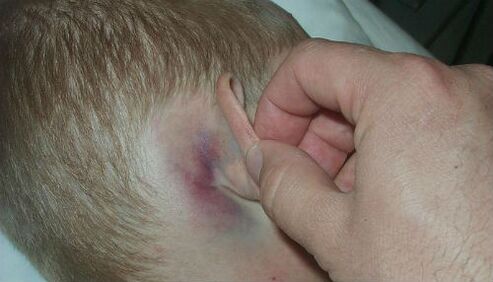
It appears on the scalp, behind the ears. Papules in these places are itchy, may be cracked, moist.
In the body
The nature of plaques on the body and their intensity depends on the form of psoriasis. Initial psoriasis on the body manifests itself in different ways: from single rashes to large areas.
In the hands
The plaques first appear on the elbows, forearms, and then spread to the palms and fingers.
Walking
The first manifestations begin in the knees or feet, progressing to other areas.
On elbows and knees
Psoriasis in these areas looks like a red, scaly rash, the skin in these places is rough.
in the palms
Plaques in these places develop when other areas are infected. It is dangerous that if left untreated, psoriatic arthritis will develop.
In the face
It rarely occurs in this area. It affects the area of the nasolabial folds, the eye area, the cheeks. Sometimes it spreads to the mucous membrane of the tongue, cheeks.
in the nails
In appearance it can be mistaken for a fungus, it begins with dots, furrows and ends with complete peeling.
The appearance of psoriasis in children.
The infant version of the disease, especially in infants, is symptomatic and can often be confused with diaper rash or nappy rash. Subsequently, in places of redness, peeling of the upper layers of the skin occurs, accompanied by severe itching. It is extremely important not to bring the disease to this stage, as this causes discomfort in babies.
Also, psoriasis can be expressed in a child on the head, such cases are characterized by crusts, when they peel off, small wounds remain. In any case, you should not treat your child just because he knows what psoriasis is like to avoid complications of the disease.
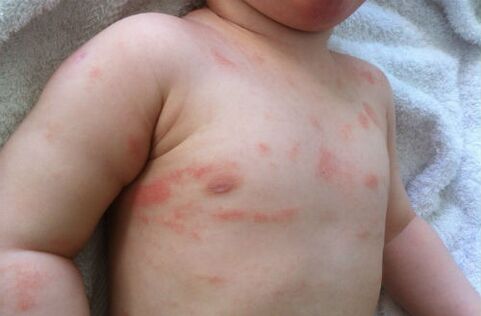
Causes of psoriasis
Psoriasis is not contagious, scientists have identified several reasons for its occurrence. In addition, it has been proven that psoriasis in childhood, that is, up to 10 years of age, occurs due to genetic causes, that is, there were relatives in the family with a similar disease. Later cases are associated with other causes.
If we combine all the factors that cause psoriasis, the following may be to blame for its manifestation:
- Alcohol abuse
- Genetic heritage
- excessive hygiene
- Dry Skin
- stress
- taking medication
- staphylococcal and fungal infections
Treatment at the initial stage
If you have been diagnosed with psoriasis, it is imperative that you follow a diet and start treatment as soon as possible, because starting psoriasis is easier and faster to cure. Until the psoriasis plaques begin to grow, the dermatologist will most likely recommend external treatment with the following ointments:
- Naphthalan ointment. Prescribed in the initial and healing stages. Relieves inflammation and calms itching.
- Sulfur and tar ointment. Relieves inflammation, suitable only for "dry" forms of psoriasis. The ointment should not be applied to the face.
- Salicylic ointment. Contains salicylic acid, thanks to which the scales are easily softened and removed.
medicines
In addition to ointments, treatment consists of physiotherapy procedures (electrosleep, magnetotherapy, ultraviolet radiation, etc. ), medications, vitamin complexes. The complete complex is intended for cases with progressive and severe forms.
The prescription of drugs is carried out only after the examination and, as a rule, includes a certain group of drugs:
- antihistamines,
- diuretics,
- immunomodulators,
- immunosuppressants,
- antidepressants,
- NSAIDs (a group of non-steroidal anti-inflammatory drugs),
- enterosorbents,
- vitamin complexes.
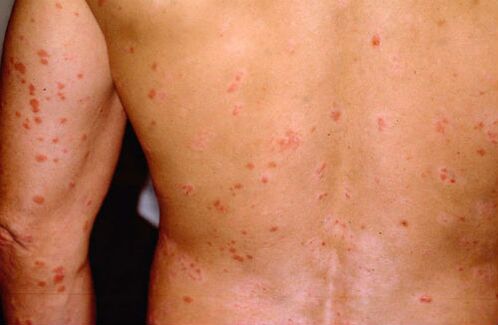
Home remedies
Traditional treatment, especially in the early stages, can be combined with traditional treatment recipes. One of these recipes suggests the use of celandine juice. It is necessary throughout the summer to smear the spots with fresh juice, then by the end of the summer the plates will significantly decrease in size. If you do the paperwork for three summers in a row, the stains should be gone forever.
With early psoriasis, the following recipe is suitable: ointment from beaten eggs. Simple preparation: 2 eggs, 1 tbsp. ivegetable oil, beat well and add 0. 5 tbsp. acetic acid. This mixture can be stored, but only in a closed container and in a dark place. Use as follows: Rub psoriasis affected areas at night, daily.
You can also prepare a fat-based ointment, which helps a lot in the treatment of psoriasis. You need to take 300 g of fat, 2 chicken yolks and 100 g of linden honey. Use within two weeks. To rub the sore spots 3 times a day, leave it for 2 hours, and then rinse. After two weeks, another batch is prepared by adding 2 tbsp. Icelandine powderThis composition is designed for one hour.
In addition to psoriasis ointments, you can take therapeutic baths with the addition of sea salt or, for example, nuts. It is useful to take such a bath not only in the early stages, but also during the exacerbation of the disease. For a bath, you need to prepare leaves or husks, about 400 g, pour boiling water over them, leave for 10 minutes, and then strain. The filtered solution is intended for a therapeutic bath, it must be drunk within half an hour.
How to prevent psoriasis
It is known why plaque psoriasis develops, but why it takes certain forms is not fully understood. The disease can manifest itself after stress, immune system failure, past infections, or at the genetic level.
To protect yourself from a relapse, you need to give up bad habits. In addition, doctors advise to moisturize dry skin well and, if possible, avoid burns, hypothermia and skin injuries. Also, you should be careful when taking antibiotics, vaccinations, and beta-blockers, as they can lead to an exacerbation.
Avoiding infections, leading a healthy lifestyle, not overworking, and avoiding stressful situations and worries – these measures will also help prevent psoriasis to some extent.
Psoriasis is a disease that needs treatment, but it can be confused with a similar skin disease. That is why you should not make a diagnosis from a photo, and even more so prescribe a treatment without having the necessary knowledge to do so.























